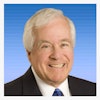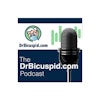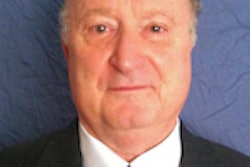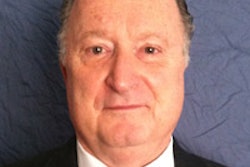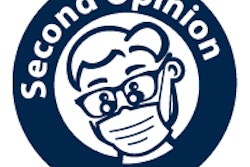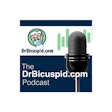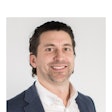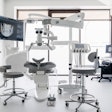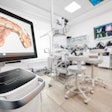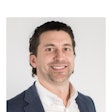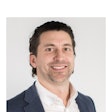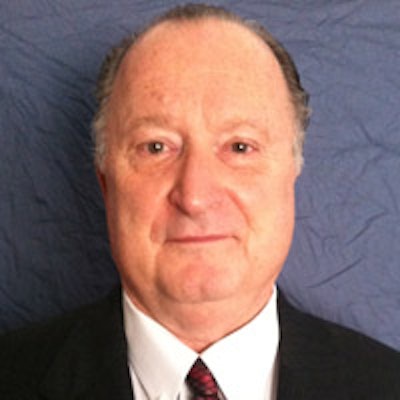
Each January, I inspect the relevant empirical weighted-average cost of capital numeric expressed as a percentage for determining the economic performance and valuation of a solo or group dental practice. I employ the Useful Data Set available from the New York University (NYU) Stern School of Business here.
 Thomas Climo, PhD.
Thomas Climo, PhD.Last year, in an article entitled, "Dental industry outlook brightens as cost of capital falls in 2014" (DrBicuspid.com, January 27, 2014), I included a table showing that whereas the cost of capital had risen for evaluating dental practices between 2012 and 2013, it had fallen between 2013 and 2014. The capital industry I used was private equity, since in keeping with opportunity cost as the only relevant cost number or hurdle rate for the economic judgment of practice performance, the next best alternative for selling a dental practice would be to a dental practice management (DPM) or dental service organization (DSO) owned by a private equity group.
| Empirical results for the public/private equity industrial sector | ||
| Year | Cost of capital | Change |
| 2012 | 10.14% | Base year |
| 2013 | 10.97% | 0.83 points up |
| 2014 | 9.46% | 1.51 points down |
This expedient of using private equity as a proxy for dental practice cost of capital is no longer available at NYU Stern. Sometime after January 1, 2014, the NYU Stern data set moved from data collected by "Value Line," which had the private equity sector, to data collected by "Cap+ IQ," which does not. So, unless I wanted to change my empirical data source from NYU Stern to Value Line, I would have to search for a "new" industry to capture the cost of capital for retail dentistry. I could either look at the different retail industries, or, in keeping with the opportunity cost reasoning which led to using private equity, see if there was an industry in the NYU Stern list featuring healthcare support services. There was. The relevant line item is captured below:
| Healthcare support services | |
| No. of firms | 138 |
| Beta | 1.05 |
| Cost of equity | 8.2% |
| E/(D+E) | 78.95% |
| Standard deviation in stock | 46.72% |
| Cost of debt | 3.17% |
| Tax rate | 13.27% |
| After-tax cost of debt | 2.75% |
| D/(D+E) | 21.05% |
| Cost of capital | 7.08% |
In many respects, this line item is better than the one I have been using in past years simply because it hones in closer to a portfolio of investments in the support services of the dental industry, rather than the entire investment portfolio consisting of many higher risk investments than retail dentistry.
The change from 9.46% in 2014 to 7.08% in 2015 is not insignificant. A million-dollar practice having a genuine net income margin of 15% and dropping $150,000 to its bottom line would be valued differently in accordance with its cost of capital in the various years 2012-2015 as illustrated below.
2012: $150,000 ÷ 10.14% = $1,479,290
2013: $150,000 ÷ 10.97% = $1,367,365
2014: $150,000 ÷ 9.46% = $1,585,624
2015: $150,000 ÷ 7.08% = $2,118,644
To argue that such a wave of difference between the market worth of the same practice from year to year is incorrect is to express a complete misunderstanding of the valuation process and an absolute lack of knowledge of what it is a hurdle rate such as cost of capital accomplishes in this process. To think each year the opportunity cost that each practice owner faces is the same as to deny the validity of the business cycle.
Anyone who bothered to survive the Great Recession of December 2007 until February 2010 knows the difference between a set of good years and set of bad ones. Bad years have higher cost of capital; good years lower ones. That is why in good years the valuation of dental practices increases. This is not the doing of this author or a connivance of the economic profession -- it is stone-cold market reality.
Wise owner-dentists take this reality and converts it to their favor. The fall in the basis of the cost of capital to be used this year for the valuation of dental practices presents a great opportunity for those dentists close to retiring or who wish to sell to capture a windfall. As the table above shows, there was a positive move from 2014 to this year of more than half a million dollars. Putting that much more money in your pocket in a sale this year compared with last year is not a small matter.
If you are interested in earning a windfall and need a new valuation performed under these new market circumstances, you are wise to consult a valuation expert in the dental field to seek out your 2015 valuation. You might also consider possibly putting your business up for sale with a transition broker, or with someone with a ready Rolodex of private equity groups with the financial backing and interest in putting dental practices in his or her investment portfolio.
Be sure to check the references of said valuation consultant and/or transition broker. If the person can't show you at least three references from presidents or founders of major DPM or DSO groups and at least six solo or group dental practitioner owners, I'd pass. Also, find out the details of the individual's latest buy-sell transaction. If you pay a commission of more than 2%, I don't know why.
Thomas Climo, PhD, is a professor emeritus of accounting and finance at a major university in the U.K. He has published extensively about the importance of modern managerial and financial decision-making for dentistry. He is a consultant to corporate and solo practitioner dental practice management companies in the states of Arizona, California, Connecticut, Nevada, New Hampshire, New York, and Massachusetts. He can be reached by email at [email protected] or by telephone at 702-578-2757.
The comments and observations expressed herein do not necessarily reflect the opinions of DrBicuspid.com, nor should they be construed as an endorsement or admonishment of any particular idea, vendor, or organization.


